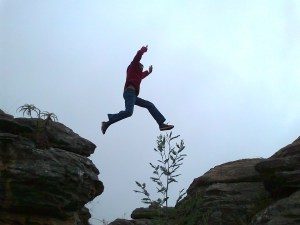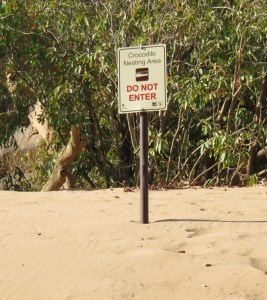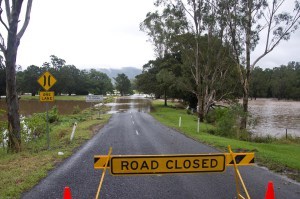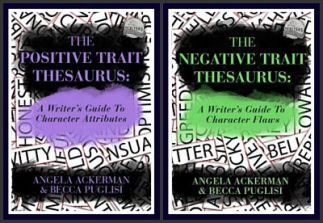How To Turn Your Setting Into An Obstacle Course
As you can imagine, with only a month between us and release day for the Setting Thesaurus books, Becca and I are practically twitching with excitement. More than anything, we can’t wait to show how this versatile element of storytelling is no mere wallflower. No, the setting is a powerful tool, one with the ability to deepen characters, make a story more meaningful and compelling, and of course, juice every scene with emotion and conflict.
(And that’s just to start!)
 Becca and I are big believers in making the setting work hard in EVERY scene. A terrific way to do this is to turn a setting into a magnet for conflict. After all, the hero or heroine’s path to their goal should never be a leisurely stroll. Instead, we want bumps and upsets, a route paved with inconvenience and obstacles. A sunny walk through the park should have the storytelling equivalent of hot lava to navigate, a swath of man-eating grass, and heck, maybe even a zombie toddler or two stumbling around looking for their next man-sized happy meal.
Becca and I are big believers in making the setting work hard in EVERY scene. A terrific way to do this is to turn a setting into a magnet for conflict. After all, the hero or heroine’s path to their goal should never be a leisurely stroll. Instead, we want bumps and upsets, a route paved with inconvenience and obstacles. A sunny walk through the park should have the storytelling equivalent of hot lava to navigate, a swath of man-eating grass, and heck, maybe even a zombie toddler or two stumbling around looking for their next man-sized happy meal.
Conflict keeps readers reading. It transforms lumpy gobs of description into a vivid landscape of activity. It creates tension–that tingly, uncomfortable pressure that builds in a reader’s chest as they worry about the outcome. (And as writers, we LOVE making them feel that!)
Not only do obstacles create tension and conflict, they also force our protagonist into a corner, providing the perfect opportunity for us to test their mettle.
CREATE A GAUNTLET OF CHALLENGES
There are many different ways to use the setting to stress the hero or heroine, triggering a response that shows, not tells, who they really are. Here are a few to sink your teeth into.
Inherent Dangers
 Any setting has the potential to cause trouble for the protagonist. Whether it is Lego strewn across the family room carpet as your character breaks into a house to steal important documents, a river that runs deeper than it appears, or a driver texting rather than watching the crosswalk your heroine is on, danger is everywhere. Look to the natural environment your character is in and ask yourself, what could go wrong here? Then, if it makes sense for the story, set your character on a crash course with danger. Not only will this cause the reader’s pulse to race, how your character responds will show readers what they are made of.
Any setting has the potential to cause trouble for the protagonist. Whether it is Lego strewn across the family room carpet as your character breaks into a house to steal important documents, a river that runs deeper than it appears, or a driver texting rather than watching the crosswalk your heroine is on, danger is everywhere. Look to the natural environment your character is in and ask yourself, what could go wrong here? Then, if it makes sense for the story, set your character on a crash course with danger. Not only will this cause the reader’s pulse to race, how your character responds will show readers what they are made of.
Misfortune
 On the other side of the danger coin is plain old bad luck. Sometimes unforeseen events land in our character’s lap at the worst time, and guess what makes that happen? That’s right, the setting. From bad weather that makes travel difficult, to a car breakdown, to being in the wrong place at the wrong time and witnessing a murder, misfortune creates mayhem. How does your character react–fight, or flight? Do they wallow, retreat, throw in the towel? Or do they shake off disappointment and regroup with a new plan?
On the other side of the danger coin is plain old bad luck. Sometimes unforeseen events land in our character’s lap at the worst time, and guess what makes that happen? That’s right, the setting. From bad weather that makes travel difficult, to a car breakdown, to being in the wrong place at the wrong time and witnessing a murder, misfortune creates mayhem. How does your character react–fight, or flight? Do they wallow, retreat, throw in the towel? Or do they shake off disappointment and regroup with a new plan?
Remember with misfortune, a little goes a long way. If you use it, ensure your event is logical for the setting and the circumstances so it never comes off as a plot device.
Physical Roadblocks
 In every scene, your character has a goal. Physical obstacles can be a great way to derail the protagonist’s progress or cause painful delays.
In every scene, your character has a goal. Physical obstacles can be a great way to derail the protagonist’s progress or cause painful delays.
Whether the hero or heroine is stopped short by a locked door, missing car keys, a washed out bridge, or a forest fire caused by a lightning strike, roadblocks force detours. This challenge can showcase their creative problem solving and adaptability, as well as test their resolve.
People and Obligations
 Ah, people. There they are, all around your character–family, friends, strangers, enemies. Running into one at a bad time is no fun in real life, and can cause big problems in the fictional world. Did that nosy neighbor see something she shouldn’t have? Do the parents of your hero show up for a surprise visit just as his swingers’ party is getting underway? Does your heroine stumble upon a backwoods meth camp while out looking for her lost horse? People can be natural disruptors, messing up plans and creating complications.
Ah, people. There they are, all around your character–family, friends, strangers, enemies. Running into one at a bad time is no fun in real life, and can cause big problems in the fictional world. Did that nosy neighbor see something she shouldn’t have? Do the parents of your hero show up for a surprise visit just as his swingers’ party is getting underway? Does your heroine stumble upon a backwoods meth camp while out looking for her lost horse? People can be natural disruptors, messing up plans and creating complications.
This goes double for the people your character is obligated to. Real world problems stemming from relationships add realism while creating a quagmire of problems to navigate. Take the hero’s sister dumping her kids at his apartment because she needs to check herself into rehab. Caring for children when he wasn’t expecting to will create some stress, sure…but if he also happens to have his own demons to contend with, the situation can become dangerous. Imagine becoming suddenly responsible for two young children while he’s actively trying to dodge loan shark tough guys looking to collect an overdue payment. Now, the repercussions of his obligation is no longer a mere inconvenience. It could lead to a child being hurt.
The Little Things
 If every challenge and obstacle was some catastrophic event, we’d be tangoing with melodrama in no time. Luckily, little obstacles can be just as effective and remind readers of the real world. After all, who hasn’t spilled coffee on their slacks right before an interview, taken the wrong bus on route to an important doctor’s appointment, or discovered a broken tent pole only after completing a four hour hike into the mountains? The little things are like midges biting at the skin, and how gracefully (or not) your protagonist bears the pain as things pile up will humanize him to readers and teach him resilience, something he’ll need if he’s in it for the long haul.
If every challenge and obstacle was some catastrophic event, we’d be tangoing with melodrama in no time. Luckily, little obstacles can be just as effective and remind readers of the real world. After all, who hasn’t spilled coffee on their slacks right before an interview, taken the wrong bus on route to an important doctor’s appointment, or discovered a broken tent pole only after completing a four hour hike into the mountains? The little things are like midges biting at the skin, and how gracefully (or not) your protagonist bears the pain as things pile up will humanize him to readers and teach him resilience, something he’ll need if he’s in it for the long haul.
If you find your scene is flagging, try planting an obstacle or two in your character’s path. Besides, whatever it is your protagonist wants most is something they need to fight for. Winning becomes so much more of a rush for readers when the protagonist has really worked for it.
How do you challenge your characters? What are some of the obstacles you’ve thrown in their path? Let us know in the comments!
 Oh and before I forget, Becca and I have 2 week-long giveaways going on at Amazon to get us all revved up for release day. If you’d like to snag a copy of The Positive Trait Thesaurus or The Negative Trait Thesaurus (or both!), just follow the links to enter. Good luck!
Oh and before I forget, Becca and I have 2 week-long giveaways going on at Amazon to get us all revved up for release day. If you’d like to snag a copy of The Positive Trait Thesaurus or The Negative Trait Thesaurus (or both!), just follow the links to enter. Good luck!
And if you might be willing to help out with our launch week festivities, let us know. We’d love your help. 
Image #2: heysalzmanngmailcom
Image #3: Stux @ Pixabay
Image #4: Sandid @ Pixabay
Image #5: Founry @Pixabay
Image #6: StevePB @ Pixabay
The post How To Turn Your Setting Into An Obstacle Course appeared first on WRITERS HELPING WRITERS™.
Writers Helping Writers
- Angela Ackerman's profile
- 1014 followers



